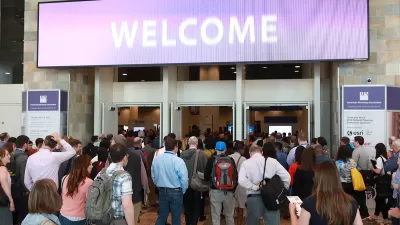Unless they are independently wealthy, students thinking about graduate school in planning need to consider the cost.

Unless they are independently wealthy, students thinking about graduate school in planning need to consider the cost. Unfortunately this is not as simple as looking up tuition on a web site. The cost paid by a specific individual can vary greatly from place to place, and even from year to year at the same school, in ways that are hard to predict.
The net price of your education has multiple components. Costs include tuition, fees (which can be substantial), housing/transportation (varies a lot from place to place), any required health care plan, and moving. Revenues can include assistantships (that you work for), fellowships (that just provide money), part-time work at the university, and summer internship programs. You can fill gaps with loans, savings, and other paid work. In the longer term you can also factor in issues like fit and preparation. It may save you money if the program closely fits your interests and helps you get the kind of job you really want.
The sticker price (for tuition) is quite different to the real price (for all of the above). Some private schools have high tuition but provide lots of assistance. Some state schools are now really expensive, particularly if you are from out of state. The deal you will get can be hard to predict. Universities change their budgeting systems over time. They alter how much they give in aid to students. They raise or lower tuition (the latter does happen-Cornell's planning program lowered its tuition a few years back). Some schools provide the same package to everyone; others provide tiers. Some change their funding policies from year to year. Students may be able to get loans and other help based on their income largely, though not always, through federal programs. Most are for U.S. citizens and permanent residents but some are sponsored by the university and not so restricted. Some schools have very specific earmarked fellowships, for example for graduates of a specific university residing in the mid-Atlantic states or students from Africa with an interest in public service. This means if a school excites you it's worth applying and seeing what you get.
Information in the ACSP and Planetizen guides can be hard to interpret. I was recently in a meeting with a faculty member from another institution (one I have never worked at). I was quite surprised to hear his version of the cost of attending his institution-it was very different to the picture I'd developed from reading the guides. This is another reason to apply and see how it goes.
Foreign students have a different calculus. Some U.S. schools provide basically no help to foreign students. Others are generous. Governments and agencies like the U.N. have programs to pay for education abroad. On the other hand, schools outside the U.S. have widely varying costs. Many provide a very high quality education for a low price. However, others aim to make much of their money from foreign students so the price can be steep.
On average you will get more money if you have good grades, work experience, a clear statement of purpose, good letters, good GREs, and good work samples (if they ask for them). If one of these is not so good (e.g. your grades) work on others (e.g. experience).
Remember, it's not worth getting into enormous debt to obtain a planning education. In a public service profession your salary won't be high enough to pay it back easily (unless perhaps you go straight into real estate development and are a huge success).
I have a number of other blogs on getting into graduate school in planning including: how to decide if planning is for you, whether to get work experience before you go, find the right program, apply, write a statement of purpose, obtain letters of reference, visit successfully, and decidewhich offer to take up. Also, whether to do a PhD or not and find an undergraduate program (http://www.planetizen.com/node/55420).

Trump Administration Could Effectively End Housing Voucher Program
Federal officials are eyeing major cuts to the Section 8 program that helps millions of low-income households pay rent.

Planetizen Federal Action Tracker
A weekly monitor of how Trump’s orders and actions are impacting planners and planning in America.

Ken Jennings Launches Transit Web Series
The Jeopardy champ wants you to ride public transit.

New Mexico Aging Department Commits to Helping Seniors Age ‘In Place’ and ‘Autonomously’ in New Draft Plan
As New Mexico’s population of seniors continues to grow, the state’s aging department is proposing expanded initiatives to help seniors maintain their autonomy while also supporting family caregivers.

USDOT Waters Down Self-Driving Car Regulations
The agency is reducing reporting requirements for autonomous vehicles and cars with self-driving features, prompting concern among safety advocates who say transparency is essential to the safe deployment of AV technology.

‘Minnesota Nice’ Isn’t so Nice When You Can’t Find a Place to Live
The Economic Development and Housing Challenge Program can help address the scourge of homelessness among Indigenous people.
Urban Design for Planners 1: Software Tools
This six-course series explores essential urban design concepts using open source software and equips planners with the tools they need to participate fully in the urban design process.
Planning for Universal Design
Learn the tools for implementing Universal Design in planning regulations.
Heyer Gruel & Associates PA
Ada County Highway District
Institute for Housing and Urban Development Studies (IHS)
City of Grandview
Harvard GSD Executive Education
Toledo-Lucas County Plan Commissions
Salt Lake City
NYU Wagner Graduate School of Public Service






























